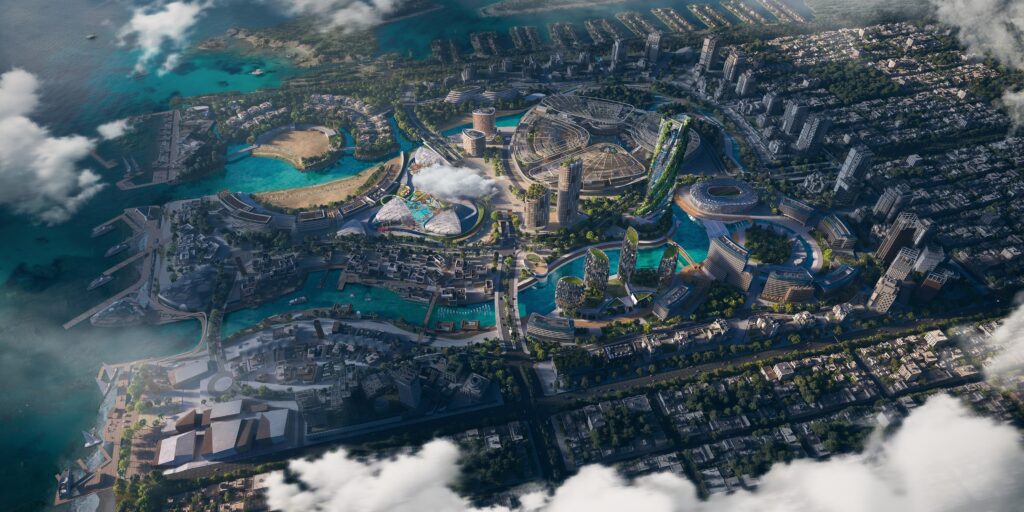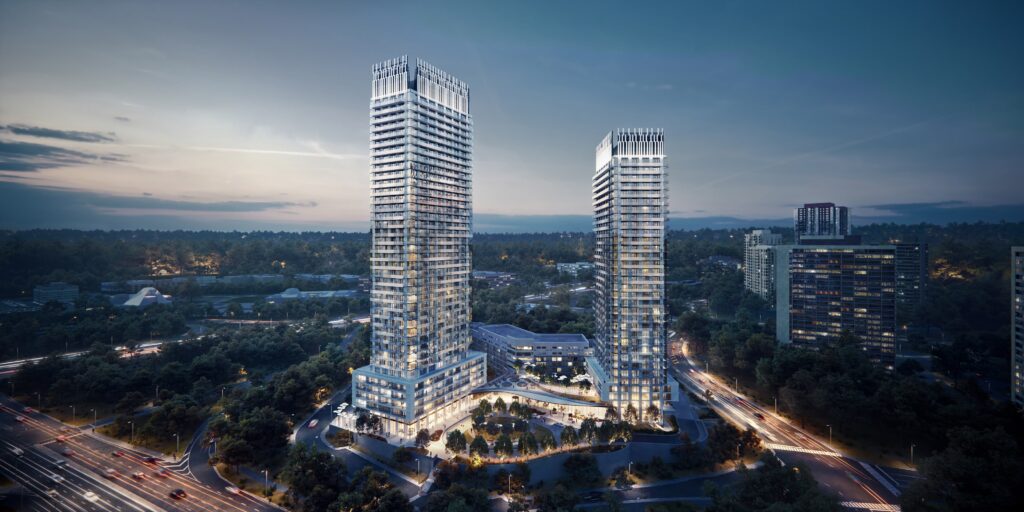Digital twinning is a solid trend in real estate and e-commerce businesses. How do companies (and sometimes whole countries) use virtual replicas? What is the difference between twins and regular 3D visualization? And how to create them? Here’s what you need to know.

What are digital twins, and where are they used?
Imagine having an interactive digital copy of a real building. One you can explore, walk through, and even take pictures of – everything you can do in real life, but just on your phone or computer. That’s the essence of a digital twin. It’s a virtual replica of a physical object or space. One of the most famous examples – Singapore’s virtual twin that was created to help the city plan infrastructure and test the impact of potential developments, environmental changes, and policy adjustments.
Singapore’s twin is a huge project that affects the entire country. But how does this technology help regular businesses? Broadly speaking, nowadays the use of these twins falls into three key categories:
Marketing & Engagement
Real estate developers and (even e-commerce businesses) use digital twins in client presentations to create engaging, interactive experiences. These virtual replicas often include real-time data overlays, such as lighting conditions and floor plan variations, helping customers better understand what they’re buying. Talking about e-commerce, digital twins enable brands to visualize thousands of variations of their products and showcase them to the customers in full detail.
Asset and Infrastructure Twins:
In production, real estate, and retailing, physical assets are tracked via digital twins. They enable monitoring of building conditions, maintaining planning, and optimizing infrastructure performance in real time.
Visualization for Simulation
Companies use 3D models connected to live or simulated data (like energy use, movement patterns) to run forecasts and test scenarios.

How twins are different from ordinary 3D visualization?
While traditional 3D visualization shows what a product or property looks like, digital twins go a step further and show how it behaves. A twin is not just a static image or animation, it’s a dynamic model that updates in real time and allows interaction. Twins let the client “dig” into the acquaintance with the product.
What are digital twins’ perspectives?
Futurologists say that by 2045, digital twins will become fully mature and ubiquitous across industries. They will model not only physical systems but also humans, cities, and biological systems. Let us introduce some examples.
Human and Organizational Twins:
Forecasts suggest that companies will simulate users, modeling behavior, usage, and decision-making patterns for product and service optimization.
Urban-Scale Digital Twins:
Entire cities could be mirrored, helping governments making traffic, energy, climate, and planning decisions.
Biological and Health Twins:
Digital replicas of the human body may be used to personalize medicine, supporting everything from preventative care to therapy and fitness.
How to create a digital twin?
Creating a digital twin starts with building a detailed 3D model of a real-world object, space, or system – whether it’s a product, a building, or even an entire city. Then this model is connected to live or simulated data sources that reflect how the object functions in real life: usage, movement, energy, temperature, and more.
At Lunas, we work with both existing 3D models and create new ones from scratch. We help real estate developers and e-commerce businesses build digital twins of their property or product that form an emotional connection with customers, allowing them to explore the property or product from every angle, understand how it fits into their lifestyle, and make confident purchase decisions.
Let’s sum it all up
– Digital twins are now widely used in real estate and e-commerce as strong marketing tools.
– By 2045, digital replicas are expected to become even more widespread. We will meet smart cities and use replicas for personalized healthcare.
– To create a digital twin, you first need a 3D model of your property or product, then you need to connect your model to a live simulated data.